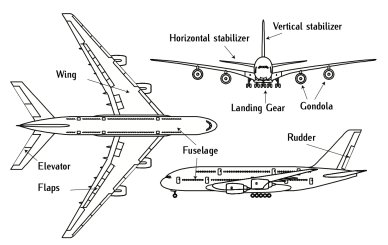

| I wanna fly like an eagle
To the sea
Fly like an eagle, let my spirit carry me
I want to fly like an eagle
'Til I'm free Steve Miller Band |
D Vautier
2/2023
I worked for Boeing for over 23 years and I finally got laid off by 9/11. During most of the time I worked with effectivities, a strange and mysterious word. These things were everywhere. They pervaded every department, group, application and project. They became the subject of any conversation, discussion, presentation, contract or coffee-machine gossip. "Hey did you hear about the snafu with effeectivity NG052? Boy, somebody is really getting it in the ass on that one." What about that mix-up they had with GC005-GC008 extension? Talk about trouble. Wow!"
The word is not used any more because it is considered legacy (which is old school and therefore bad) and instead the name has been changed into a bunch of confusing and vague words like “used on”, “assigned to”, “applied to” and on and on but the entire idea of effectivity remains a really cool concept. There is nothing more meaningful and straightforward to me than that word, which clearly and simply describes what plane or group of planes that a part is to be used on.
But the word takes on slightly different meanings in many shops throughout the company and can be used in different ways which is hard for me to describe. Nonetheless it is the common thread that runs throughout the company and every manufacturing center.
 There are two types of parts,
standard and proprietary. Standard parts are nuts, bolts and
rivets and usually do not carry effectivity but are described in the
engineering drawing. Proprietary parts are designed specifically
as belonging to a specific airplane or airplane group and must carry an
effectivity range.
There are two types of parts,
standard and proprietary. Standard parts are nuts, bolts and
rivets and usually do not carry effectivity but are described in the
engineering drawing. Proprietary parts are designed specifically
as belonging to a specific airplane or airplane group and must carry an
effectivity range.
The tail number is different. It is a unique number that the FAA gets to assign. It is an alphanumeric code between two and six characters in length used to identify any and all legal airplanes that are flying. Once used it is never reused. The alphabetical prefix of a tail number identifies an airplane's country of origin. All United States-based tail numbers, for example begin with “N,” Canadian planes begin with “C” for Canadian, German with “D” for Deutschland and so on. All of these tail numbers are used in air traffic control. It's a very good system.
 On
the other hand the effectivity used by Boeing
is a five digit number. The first two parts are alphanumeric and
identifies the type of plane, the last three are numeric and identifies
the firing order (the order the plane is on the production line). Often
times orders would be placed in groups so an order could be for
NA231-NA238 and that would be the effectivity range that applied, for
example, to eight planes ordered from Alaska Airlines. But no airplane
is unique because customers always request changes within the order
itself so the effectivity of a part may only extend to NA233-NA234 or
just NA233.
On
the other hand the effectivity used by Boeing
is a five digit number. The first two parts are alphanumeric and
identifies the type of plane, the last three are numeric and identifies
the firing order (the order the plane is on the production line). Often
times orders would be placed in groups so an order could be for
NA231-NA238 and that would be the effectivity range that applied, for
example, to eight planes ordered from Alaska Airlines. But no airplane
is unique because customers always request changes within the order
itself so the effectivity of a part may only extend to NA233-NA234 or
just NA233.